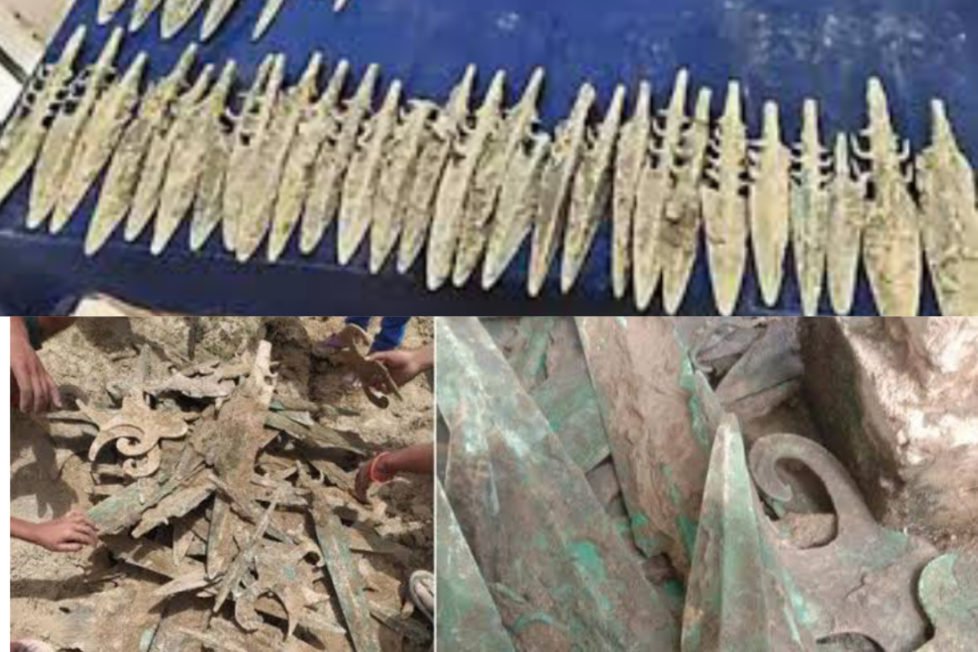4000-year-old copper weapons discovered in Manipuri village of Uttar Pradesh dates back to Mahabharata era


A large number of copper weapons were unearthed by a farmer in the village of Ganeshpur in Manipuri. Earlier this month, he discovered numerous metal swords and harpoons while preparing his land for harvest. According to reports, the farmer thought they were all priceless items made of gold or silver and brought them all home. However, after some residents called the police, the Archaeological Survey of India (ASI) hurried to the area and collected the uncovered antiquities. There are reportedly about 39 weapons.
The sources state that “different swords, some that archaeologists are calling antenna swords and harpoons with a hook at the bottom” were among the items discovered. These copper swords, according to archaeological specialists, date back 4,000 years.
The director of archaeology at ASI, Bhuvan Vikram, was reported by The Times of India as saying, “These copper hoards belong to the Chalcolithic period (copper age), and the existence of Ochre Colored Pottery (OCP) is directly related with this epoch.”
Studies have shown that these hoard implements were predominantly fashioned from copper and not bronze, despite the fact that bronze was a specialty of the Harappan civilization, which was essentially an urban society during the copper age.
Vasant Swarnkar, ASI’s director of conservation and spokesman, claimed that a number of finds have demonstrated that the Mainpuri material was almost 3,800–4,000 years old. “Samples collected from the neighbouring Sanauli (Baghpat), Madarpur (Moradabad), and Sakatpur (Saharanpur) sites were also subjected to a carbon dating test.
Sanauli Village in Baghpat discovered 4000-year-old chariots
In 2018, the Archaeological Survey of India (ASI) discovered many Sanauli artefacts dating from 2000 BC to 1800 BC from the Baghpat district of Uttar Pradesh. The burials are really from the Mahabharata era, according to the experts.
From the locations that date back to the Mahabharata era, the ASI had discovered a number of chariots. Carbon dating has now revealed that the burials date back to 1900 BC, making the chariots 3,800 years old, according to a TOI report. The ASI officials assert that it is quite likely that a horse was used to pull those chariots. The ASI team had also found a protective crown or helmet that the chariot rider often wore in another pit.
Several wooden coffin burials, copper swords, and wooden chariots with solid disc wheels covered with copper sheets are among the site’s other significant discoveries.
Instruction manual for Mahabharata weapons found in 2013
The mantras to employ Mahabharata weaponry were specifically mentioned in a manuscript that was discovered in 2013 from the holdings of Ashtavaidyan Vaidyamadham Cheriya Narayanan Namboodiri in Kerala. The 63-folio palm leaf book reportedly has 48 well-described mantras that describe how to employ each of the deadly weapons mentioned in the Mahabharata. The ancient “user handbook” made mention of the Mahabharata weapons such as Agneyastra, Varunastra, Brahmastra, and Nagpash. The unique document was discovered during the Vaidyamadham’s collection’s digitisation process.
DISCLAIMER: The author is solely responsible for the views expressed in this article. The author carries the responsibility for citing and/or licensing of images utilized within the text.
